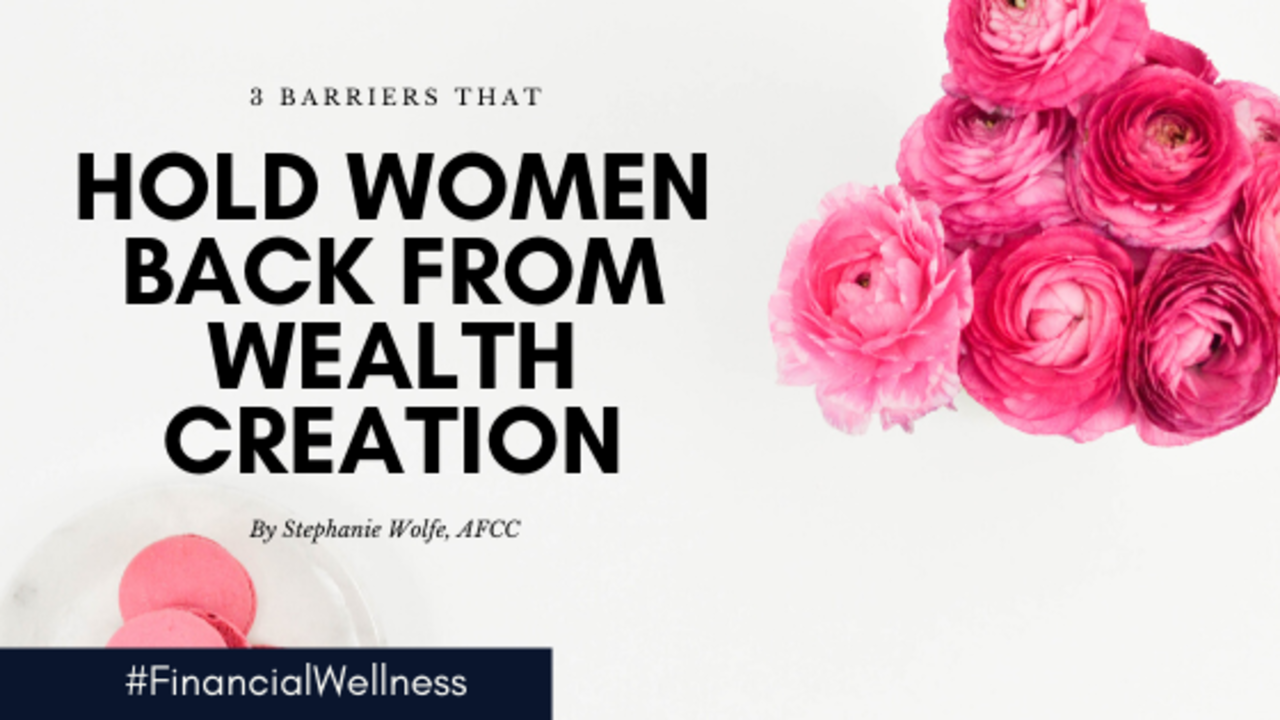The top 3 barriers that can hold women back from wealth creation
Sep 23, 2019
While it may be true that women are increasingly becoming financially independent, there remains an ongoing issue – women aren’t fully participating in growing their wealth.
Women control about 33% of the wealth in North America today, the highest share in history and a number that is growing roughly 8% per year. But, high income women earners are leaving a lot on the table when it come to wealth generation, to the tune of an estimated US $500,000 and $2 million throughout the course of their career.
The “investment gap” is real. Women are missing out on a lifetime of wealth because they are not engaged in investing.
Where are all the women?
While it's troubling to see such a lack of engagement, it’s not surprising. Women think and use money differently than men, and the traditional financial service industry was built by men, for men.
As the investment industry scrambles to figure out how to serve women better, I’ve highlighted 3 additional “gaps” that still exist when it comes to women and their money to help shine a light on the areas that need to change now.
-
The Confidence Gap: women don’t lack knowledge when it comes to investing
There’s an assumption that if you aren’t investing, you must not know enough. But the data from a US survey indicated that women are just as financially literate as men. The test results showed that 35 percent of women and 39 percent of men passed the literacy assessment, but here’s the kicker: the women were 44 percent less likely than the men to consider themselves knowledgeable.
Why do women lack confidence when it comes to financial literacy? The answer is layered with complexity, but it’s remains true that there is a vast confidence gap that separates the sexes.
The confidence gap research points to a finding called the Dunning-Kruger effect: the tendency for some people to substantially overestimate their abilities. It found that the less competent people are, the more they overestimate their abilities. In the studies, men overestimated their abilities and performance, and women underestimated both. Their performances did not differ in quality.
Evidence to support this claim can be found in a 2017 Fidelity survey that found women tend to outperform men when it comes to generating a return on their investments. The study found that on average, women’s investment portfolios earned 0.4% more than men’s in 2016. More importantly, women lose less money in a downturn. Women’s portfolios dropped by an average of 2.5% in 2015, while men’s fell by 3.8%.
It may seem that women are suffering from a case of imposter syndrome when it comes to managing their money.
-
The Goodwill Gap: women have different wants when it comes to wealth
While it’s true that both women and men want positive performance from their investments, we know that women differ from men when it comes to how they perceive wealth. Just as men, women see wealth as providing them with financial security and independence.
But what do women really want?
It turns out that when it comes to their money, women want to make the world a better place. In a report published by The Center for Talent Innovation, it found that a full 90 percent of the women surveyed wanted their time and money to advance causes that were important to them.
The same report also indicated that women believe wealth would allow them career latitude and enable greater career choice, like funding a sabbatical or starting a new business venture. Women also see their money as way to protect and support their families.
I’ve coined this the “Goodwill” gap. Sustainable and value-aligned investments are just starting to crop up in the investment industry, but until there is more demand, the world will have to wait.
-
The wage gap: Still too big (and is it even closing?)
Nope. Not even close. Women still earn $.79 to every $1.00 that a man makes. What’s more, women often take time off work to care for young children or elderly adults, their salaries peak earlier, and they need to support themselves for longer. This creates a perfect storm: women typically have less overall to contribute towards their investments, which in turn creates a higher chance they may not be able to meet their retirement needs.
However, there may be a silver lining. Fidelity’s research found that women at every income level contributed a higher percentage of their salaries toward workplace retirement plans. Women also carry less debt then men and tend to pay it off faster.
While saving more of an already unequal paycheck is not a long-term solution, it is one that women can use to their benefit with the power of compound interest. By investing early and on a regular, women can accelerate their investments over the course of their lifetime.
So what’s next for women and wealth?
Closing the gaps can take some time, but as women continue to engage in the dialogue and break traditional taboos that surround money and investments, they can overcome the barriers of wealth creation and preservation.
Women can create impressive wealth in their lives and of those around them. Wolfe Collective Wealth Inc. is focused on building awareness and inspiring action among like-minded women to advance toward the ultimate goal: financial independence and freedom.
Stephanie Wolfe is an Accredited Financial Counselor of Canada (AFCC) and the Founder and CEO of Wolfe Collective Wealth Inc. She is a passionate advocate of financial wellness and empowering women to take control of their wealth. She resides in Toronto with her husband and three children.



